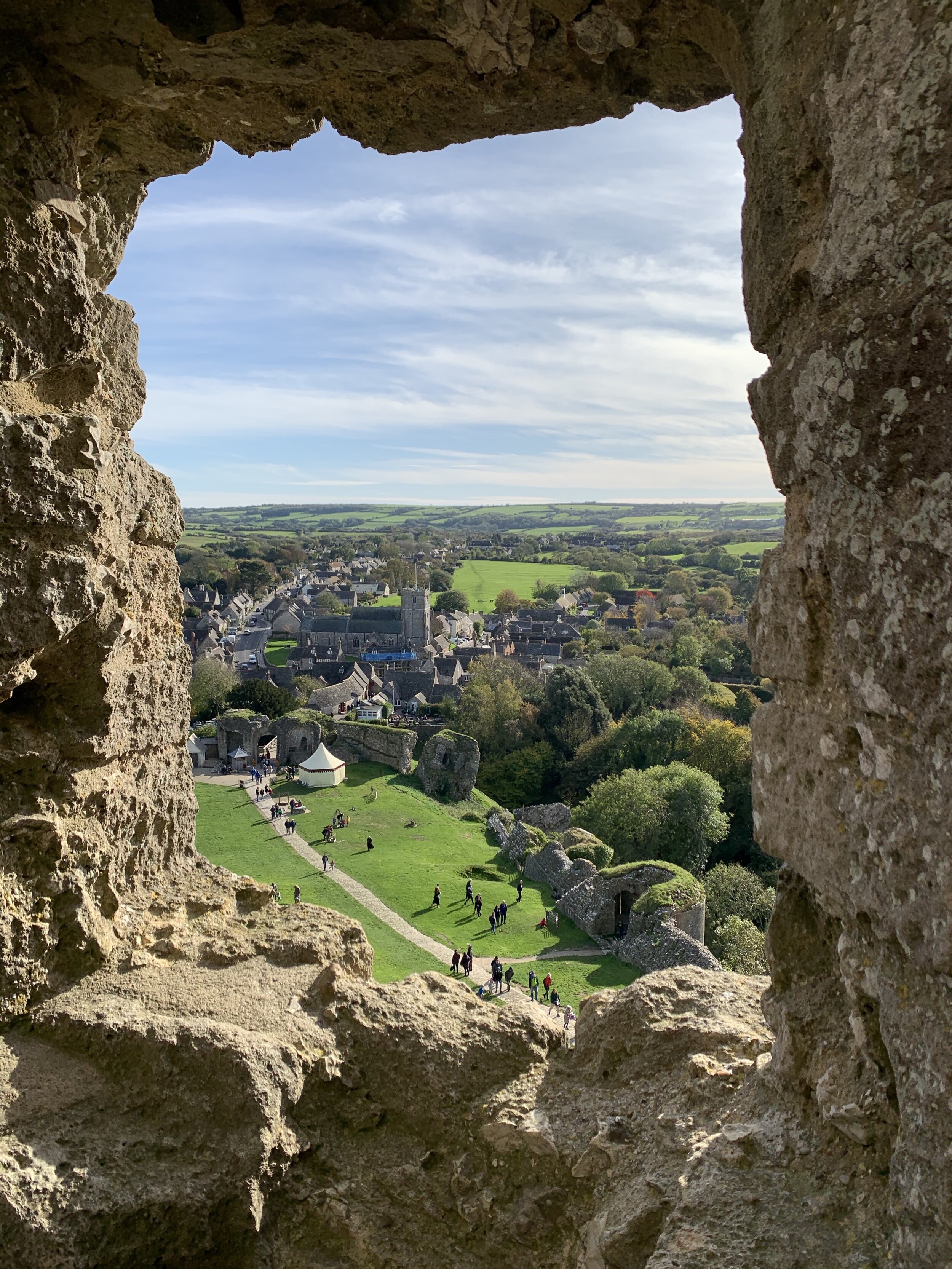What makes Corfe Castle the perfect family day out
There’s the fact that what remains of this 11th century fortress looks every child’s idea of a perfect ruined castle.
Exactly what a ruined medieval castle should look like
There’s the fact that it commands a view over the surrounding Dorset county, Purbeck landscape that stretches for miles in every direction.
The views from the castle are spectacular
There’s the fact that you can arrive there by steam train.
You can arrive - and leave - in steam powered style
But what really makes Corfe Castle the perfect family day out is that at pretty much any time you choose to visit there are cleverly conceived, marvellously entertaining and wonderfully informative activities and displays on offer that every age can enjoy.
Corfe Castle is the exact opposite of a stuffy, don't-touch-anything historical site, as the first sign you see when you enter through what remains of the original arched gate makes clear. Though I’d definitely ignore the 11 and three quarters age cap for the ‘50 things to do’ challenge.
Take no notice of the suggestion that you need to be under 11 and three quarters to do these things
I was there in October half term week and the castle was teeming with families with children of every age, clambering over and around the ruins, having a go at activities ranging from archery (with sucker-ended arrows, needless to say) to a pumpkin hunt, to a zip wire they could send stuffed toys hurtling down. Then there was the chance to witness the launch of a modern missile from a medieval siege weapon (in those far-off centuries the missile would have consisted of bags of rocks being flung over the castle walls at the approaching enemy by an ancient form of catapult called a trebauchant. Today the splendidly restored contraption is armed with nothing more harmful than a water-filled football)
This trebuchant is a medieval version of a catapult. The missile is placed in a chute at the bottom and then propelled out by the ‘hammer’ end of the pivoted arm
When it was begun by William the Conqueror, soon after his arrival in England in 1066, Corfe was one of the first Norman castles to be built partly of stone instead of timber. It rapidly became one of the most important castles in the country. (You can see how it looked in its heyday in the model village just outside the castle gates. Though it’s only open from Easter to the end of October)
An artists impression of how the castle would have looked in its Medieval heyday
The castle was an impregnable fortress guarding the gateway to Purbeck, and close to the vital port of Wareham, for over five centuries. It was besieged and finally destroyed - after six months of effort - by Parliamentarian forces during the English Civil War.
Nowadays the only marauders are the visitors who swarm over the marvellously romantic ruins, enjoying what remains of the sykscraper keep, built for William the Conqueror’s son, King Henry 1; the ruins of the Outer Bailey, which in the castle’s heyday would have been teeming with stables, workshops, storerooms and dwellings; and Inner Ward, where the kings, queens and knights who visited the castle in its heyday would have stayed.
The remains of the 3m thick walls of the soaring keep
The whole site is peppered with informative signs and illustrations, cleverly located recordings of stories from the castle’s history, and at any given time the aforementioned activities for younger (and the young at heart) visitors.
Whilst there are hours of happy entertainment on offer in the castle grounds itself, it’s worth spending time wandering round Corfe Castle village which nestles around the hilltop ruins.
The buildings in Corfe Castle village are made using local Purbeck limestone
The buildings are constructed almost entirely of local grey Purbeck limestone. When the castle was wrecked in 1645, locals used the rubble of the ruins to rebuild their houses and there are stones from the original castle walls still visible in some of the houses in the village.
A quick football themed diversion
(I have to take you on a little diversion here, because I so want to share this brilliant story with you. On Shrove Tuesday every year, local quarrymen take part in an ancient tradition that was originally set out in a charter in 1551. They meet at the Town Hall, kick a football around the village and on to Ower Quay on the south side of Poole Harbour. They they give a pound of pepper to the lord of the manor.
As random as this seems, this purpose of this ancient ceremony keeps the ancient footpath open and the working of the stone quarries in the hands of the freemen of Purbeck.)
Back to the village
The village really has only two main streets which intersect in a square in front of the castle entrance. Clustered around it are a small selection of charming shops and places to eat. We enjoyed a delicious lunch at The Pink Goat a little way down West Street. The delightfully decorated interior was perfectly complimented by the warmth of the staff and the tastiness of the small-but-perfectly-formed menu.
The cheerful, welcoming interior of The Pink Goat
Venture a little further down West Street towards the car park and you’ll come across God’s Acre Cemetery, a spot consecrated in 1926, that is so exquisitely named and so gloriously positioned it must surely qualify as the most perfect resting spot in England.
Gloriously named God’s Acre cemetery
You can find out more about the castle, the village and all the events and activities on offer, by visiting the Corfe Castle website
What historic site do you recommend visiting?
Other posts you’ll enjoy
Another great day out for the whole family
Lots to do for everyone on the North Norfolk coast
Eight great reasons to visit Rye














